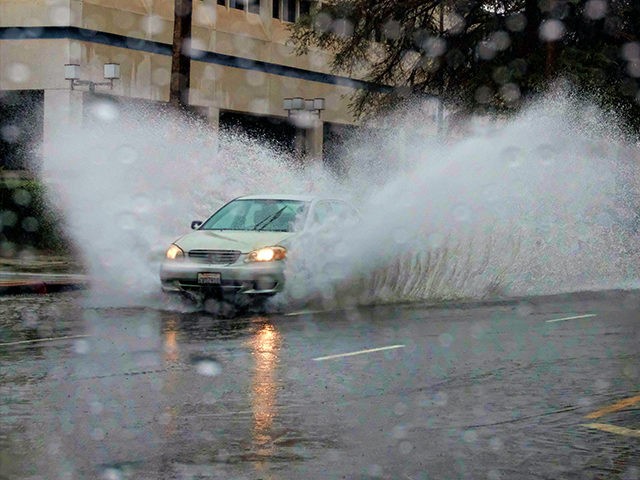California hopes to leverage the attention on Hurricane Harvey flooding to convince the federal government to fund some of the $20 billion needed to repair the dilapidated Central Valley flood control infrastructure.
Harvey has killed at least 34 and caused over $190 billion in damage thus far. The 1,000-year flood is expected to cost the U.S. economy about 1 percent of GDP, or $190 billion, according AccuWeather.
The relatively low level of fatalities for America’s worst natural disaster is being credited to Texas’ strong investment in flood control infrastructure and the regular maintenance and updates performed on the area’s two large reservoirs, which were built in the 1940s.
Breitbart News reported that the American Society of Civil Engineers (ASCE) in 2013 warned that California had a $65 billion infrastructure investment deficit in providing an adequate level of public infrastructure for dams, waterways, airports, roads, bridges, seaports and tunnels. ASCE awarded its worst “Infrastructure Report Card” grade in the nation of a “D” for levees and flood control as California’s most neglected sector.
That same year, the California Department of Water Resources issued a report finding “more than seven million people and $580 billion in assets (crops, buildings, and public infrastructure) are exposed to the hazards of flooding in California.” Despite identifying the “immediate need for more than $50 billion to complete flood management improvements and projects statewide,” California refused to spend more on flood control.
Many environmentalists at the time cautioned that “climate models unanimously project increased drought in the American Southwest, including a growing risk of ‘mega-droughts’ that last more than two decades.” They argued that flood control money would be more prudently spent preparing for the imminent rise of the sea along California’s 840-mile long coast.
California Governor Jerry Brown inked an agreement in April 2016 to tear down four hydroelectric dams on the Klamath River, owned by PacifiCorp utility. To fund the tear downs, PacifiCorp agreed to pay $200 million and Gov. Brown diverted $250 million from the $7.5 billion Proposition 1 Water Bond that was supposed to fund flood control.
But with Oroville Dam’s spillway collapsing in February, tthe Central Valley Flood Protection Board approved a plan this week to recommend that the state and federal government invest more than $20 billion over the next 30 years to protect Californians from the risk of flooding.
California Department of Water Resources’ lead flood management planner, Mike Mierzwa, told Capital Public Radio, “From a cost perspective, we’re talking about having more water move through our systems earlier in the season, and in a shorter time period, which has really significant fiscal impacts on how we would manage the system and what we would design to handle those flows.”
Mierzwa believes that as the Houston flood recedes and the recovery program begins, “they’re going to find that everything they had spent, wasn’t enough. And they’re going to want to spend and do more in the future.”
The Central Valley plan improvements are expected to cover an area stretching from Mount Shasta in the North to Bakersfield in the South. Mierzwa hopes that with Congress funding a massive recovery program for Houston, California can win funding for “new projects as well as costs of operating and maintaining the current flood control system.”

COMMENTS
Please let us know if you're having issues with commenting.